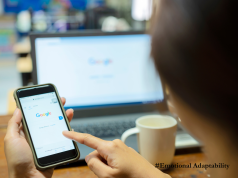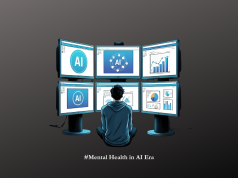In an age where our smartphones feel like an extension of our bodies, the digital workplace has become an omnipresent force in our lives. Technology has certainly provided us with unparalleled flexibility and efficiency. However, what often goes undiscussed is the psychological toll of being tethered to our devices. The cost of constant connectivity manifests in heightened stress, diminished focus, and a pervasive sense of being overwhelmed. As a health and wellness advocate, I’ve seen firsthand the impact this can have on individuals’ mental well-being.
The convenience of digital tools has led to the expectation of being ‘always on’ — an expectation that is both unsustainable and unhealthy. Employees find themselves checking emails long after the workday has ended, responding to messages on weekends, and ultimately struggling to disconnect. The boundaries that once delineated our personal and professional lives are now increasingly porous.
The mental load of perpetual online availability is significant. It can lead to burnout, a reduction in the quality of work, and a decrease in life satisfaction. The always-available culture can sabotage our mental peace and reduce the time we have for restorative activities like hobbies, exercise, and spending time with loved ones. Moreover, the pressure to respond instantly can cause anxiety, as workers feel the need to prove their dedication and productivity.
How can we navigate these challenges? The answer lies in a collective effort from both employers and employees.
Employers have a pivotal role in shaping workplace culture. They must acknowledge the adverse effects of excessive connectivity and take proactive steps to mitigate them. This might include implementing ’email-free zones,’ encouraging regular breaks, or setting clear expectations about communication during off-hours. Adopting policies that focus on results rather than the time spent online can discourage unnecessarily prolonged work hours.
Meanwhile, employees must also take agency over their digital habits. Setting personal boundaries, such as designated times to check emails or silence notifications, can be effective in managing digital stressors. Moreover, cultivating a strong support network within the workplace can help employees feel less isolated in their experiences and more empowered to vocalize their needs.
Ultimately, technology should serve as a tool to aid productivity, not as a ball and chain that shackles us to our work. As we venture further into the digital age, it is critical to remember that our well-being is not just an optional extra—it is the foundation upon which meaningful and sustainable work is built.
In conclusion, while the digital transformation of the workplace offers significant advantages, it is imperative to strike a balance. By fostering a culture that values mental health and by equipping workers with strategies to protect their psychological well-being, we can harness the power of technology without succumbing to its potential detriments. Together, we can recalibrate our relationship with connectivity, ensuring it enhances rather than diminishes our work and personal lives.




























